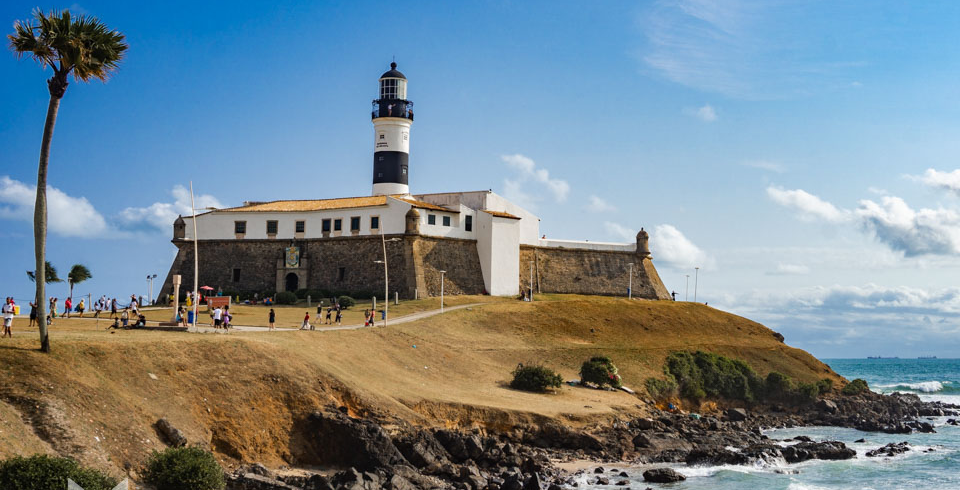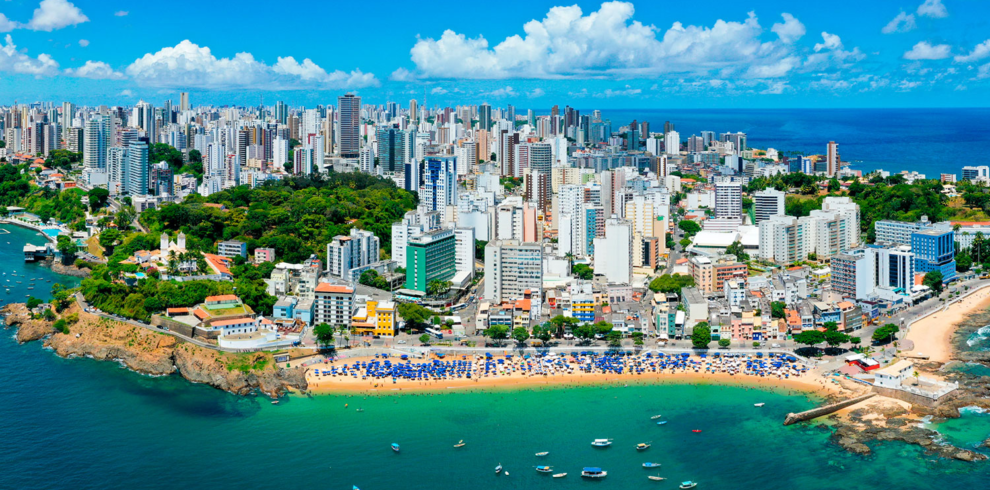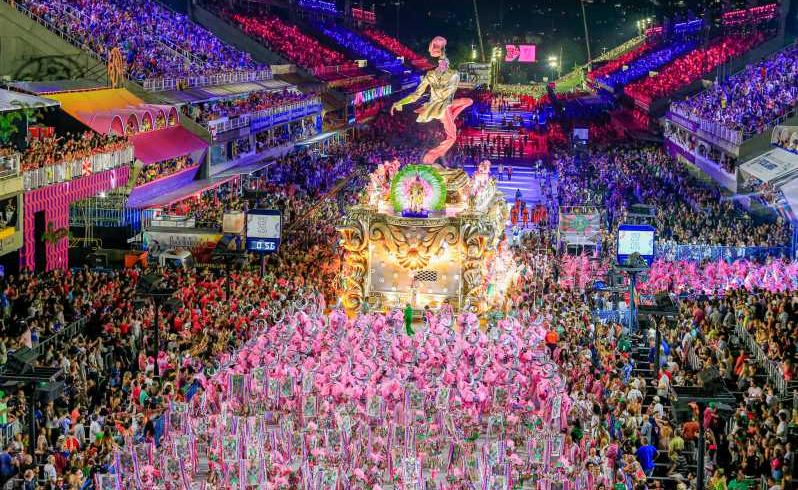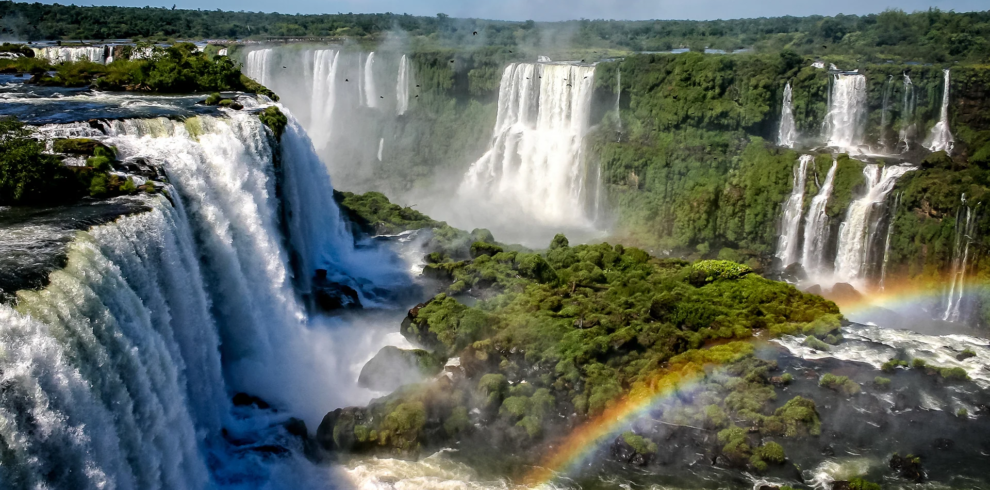Discover
Rio de Janeiro
Talking a little about
Rio de Janeiro is a large Brazilian seaside city, famous for its Copacabana and Ipanema beaches, the 38-meter-tall statue of Christ the Redeemer atop Corcovado, and the Sugarloaf Mountain, a granite peak with cable cars to its summit. The city is also recognized for its vast favelas. The exhilarating Carnival, featuring elaborate floats, extravagant costumes, and samba dancers, is considered the world’s largest.
Region
Southeast
Population
6 million inhabitants
Climate
Tropical semi-humid
Main attractions
Trails, beaches, tourist spots, parties, and much more.
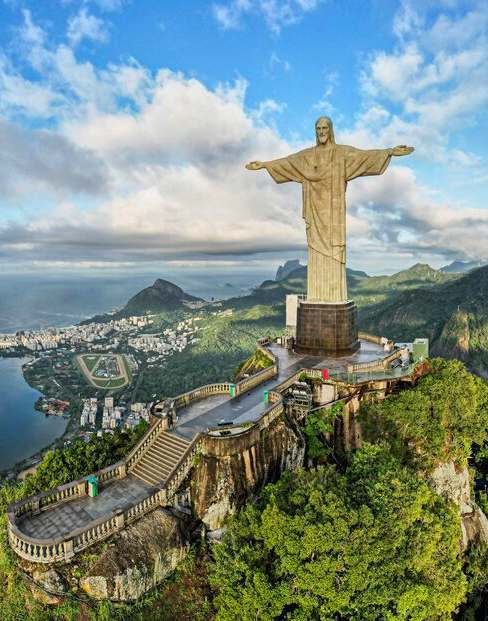
Some
Curiosities
The name Rio de Janeiro doesn’t refer to any of the 200 rivers that cross the city. In January 1502, the Portuguese explorer Gaspar de Lemos arrived at the bay. Legend has it that he was sailing through Guanabara Bay when he came up with the name for the city, mistaking the bay for the mouth of a large river. However, nowadays, historians question this theory and suggest that in the 16th century, the word for “river” was also used to identify bays. Either way, the name stuck!
Nearly a quarter of the residents of Rio live in the favelas of the city, and there are about a thousand favelas in total! These disadvantaged communities have been occupying this space since the 19th century. It was there that samba, a style of music created by the African slaves who lived there, originated. Today, most of the samba schools that compete in the Rio Carnival are located near the favelas.
And it’s not us saying it! The city’s most popular celebration is in the 2004 Guinness World Records with an estimated number of 400,000 revelers. Every year, the streets become packed in anticipation of the parade groups (blocos).
The Royal Family of Portugal bestowed this title upon Rio de Janeiro when, fleeing from Napoleon and his troops, they brought not only 15,000 people on 14 ships but also 60,000 volumes from the Royal Library. A true wealth!
In fact, one of the first acts of King João VI in Brazil was to establish the National Library, which later became the eighth largest library in the world, with over 15 million items.
There are over 6 million inhabitants living in Rio de Janeiro, but that doesn’t make them significant compared to the Tijuca Forest. Rio is home to the world’s largest urban forest!
This conservation area of 33 square kilometers is the result of reforestation efforts carried out in the late 19th century. The idea was to restore the area that had been destroyed by coffee plantations to prevent erosion of the hills surrounding the city. Several of Rio de Janeiro’s tourist attractions are partially located within the Tijuca Forest.
Some of our
itineraries
EXAMPLE Rio with its dreamy seaside surroundings & Salvador with the sea of Morro. Embark on an exciting journey through...
EXAMPLE Adventure Journey with Salvador & Chapada Diamantina + 4x4 Expedition in the Northeast. In this trip to Brazil, you...
Explore the ultimate Rio Carnival experience with our exclusive tour that combines the thrill of watching and participating in the...
EXAMPLE Rio de Janeiro with a stay in the Amazon Jungle + a paradise beach.An essential itinerary that will take...
EXAMPLE Rio de Janeiro with the majestic Foz waterfalls & the Pantanal, a concentration of animals to observe.A wonderful journey...
EXAMPLE The great Brazilian capitals Rio and Salvador and the wild Brazilian Northeast with the most unique desert in the...
EXAMPLE Rio de Janeiro with the great waterfalls of Foz & Amazon JungleDiscover the true essence of Brazil on an...







